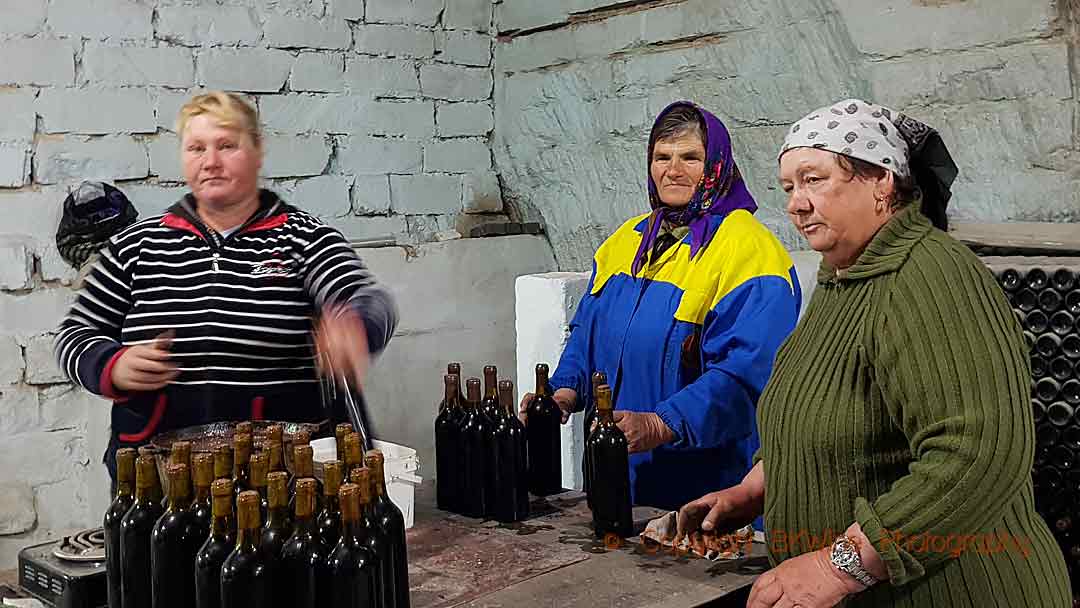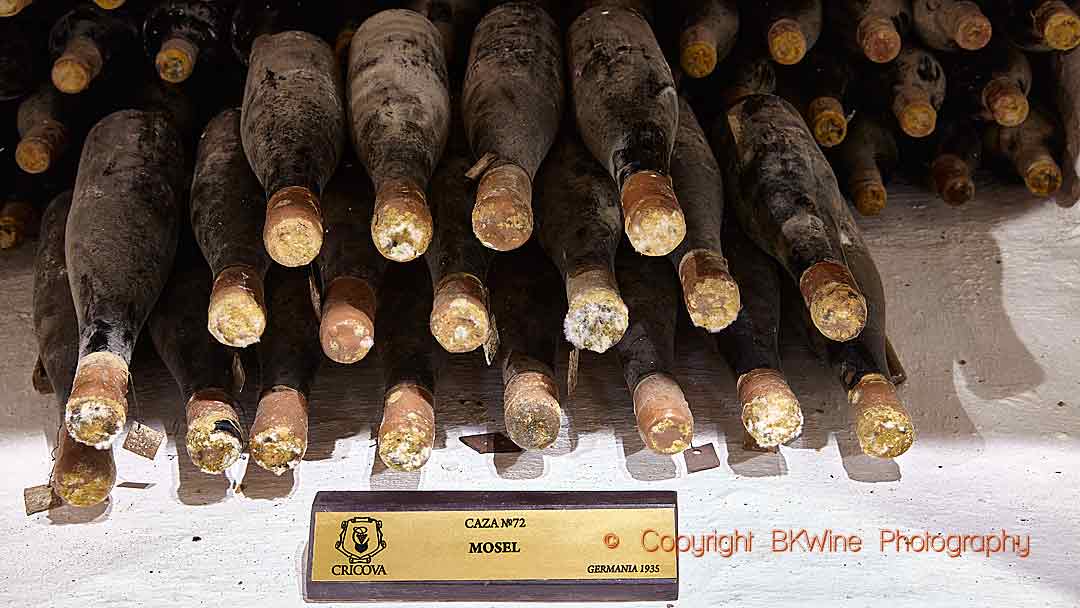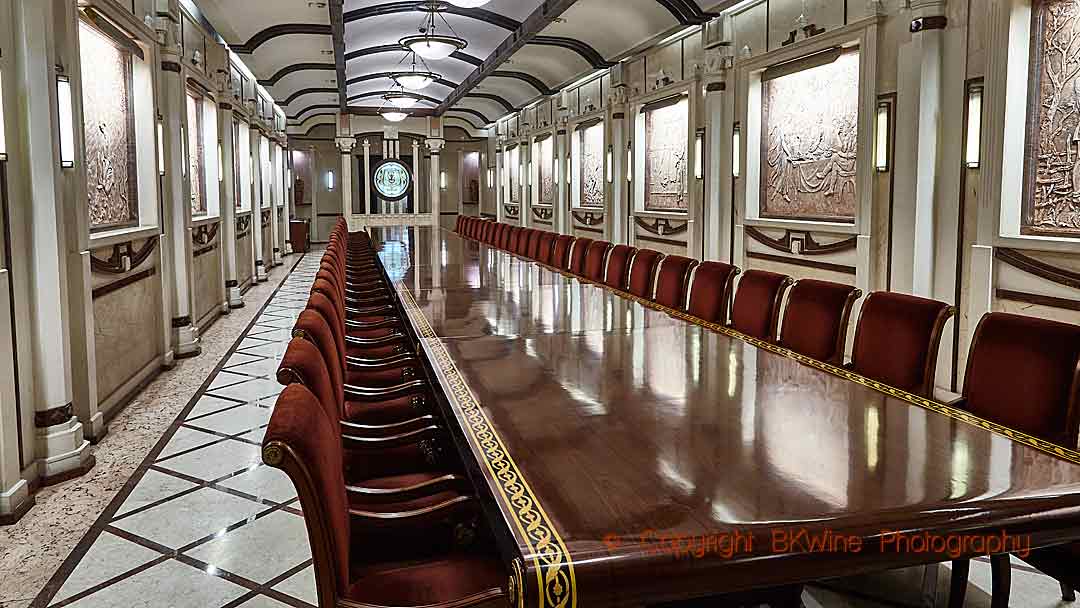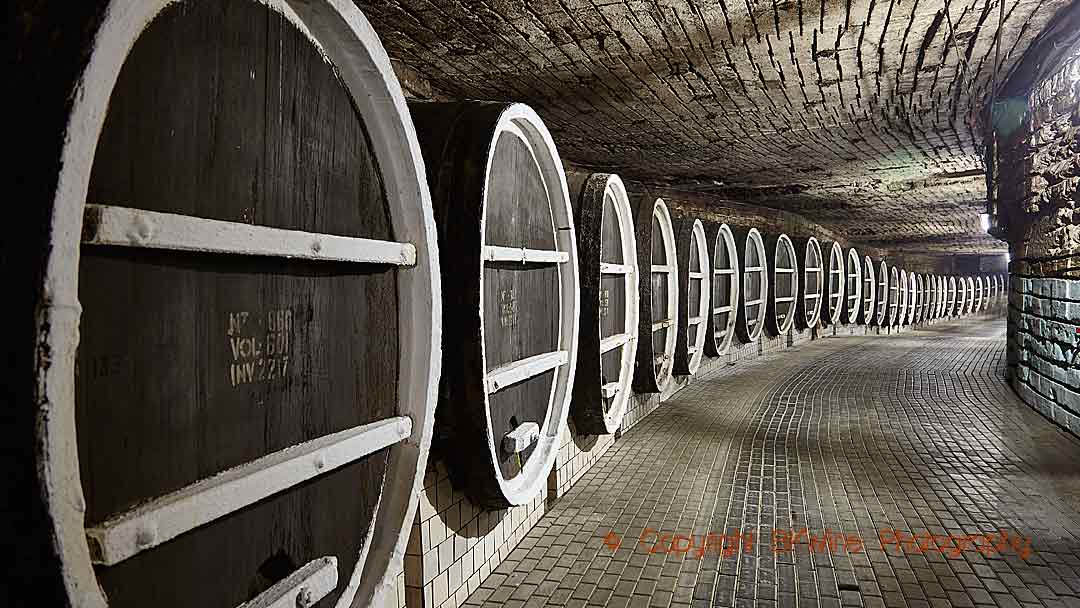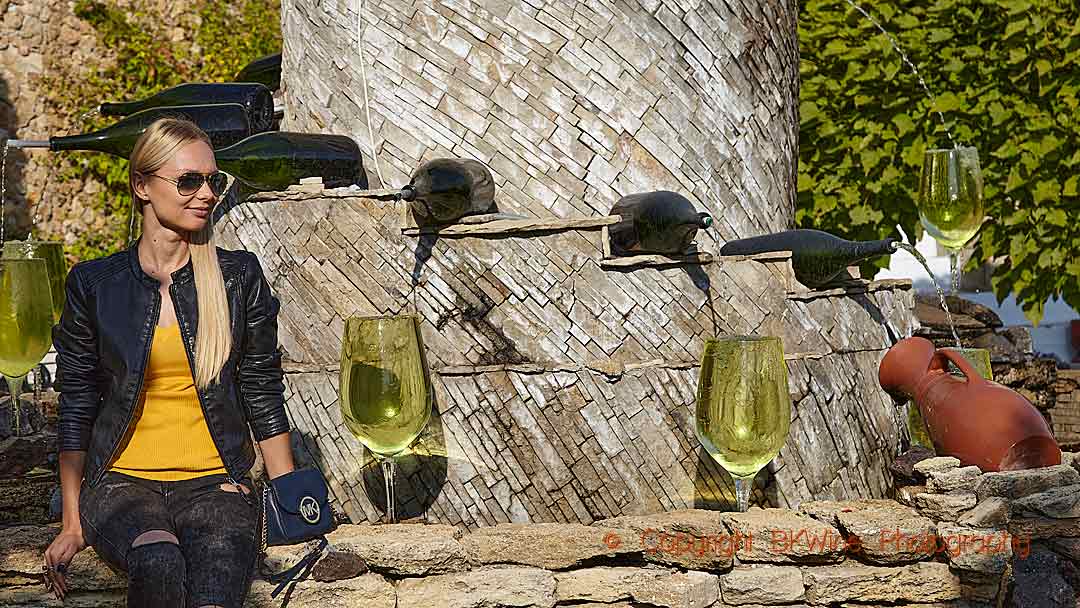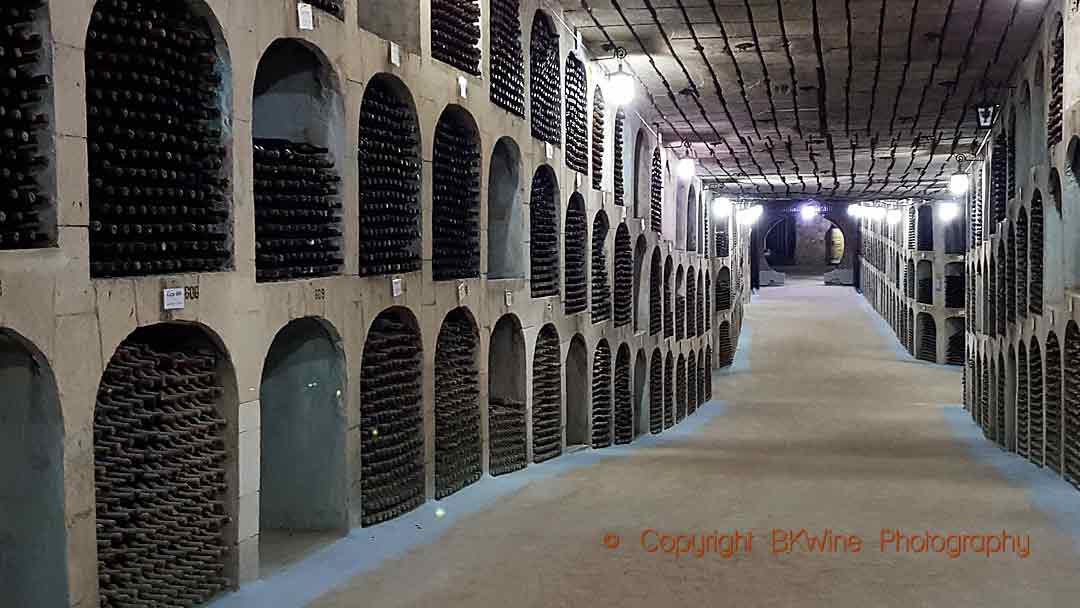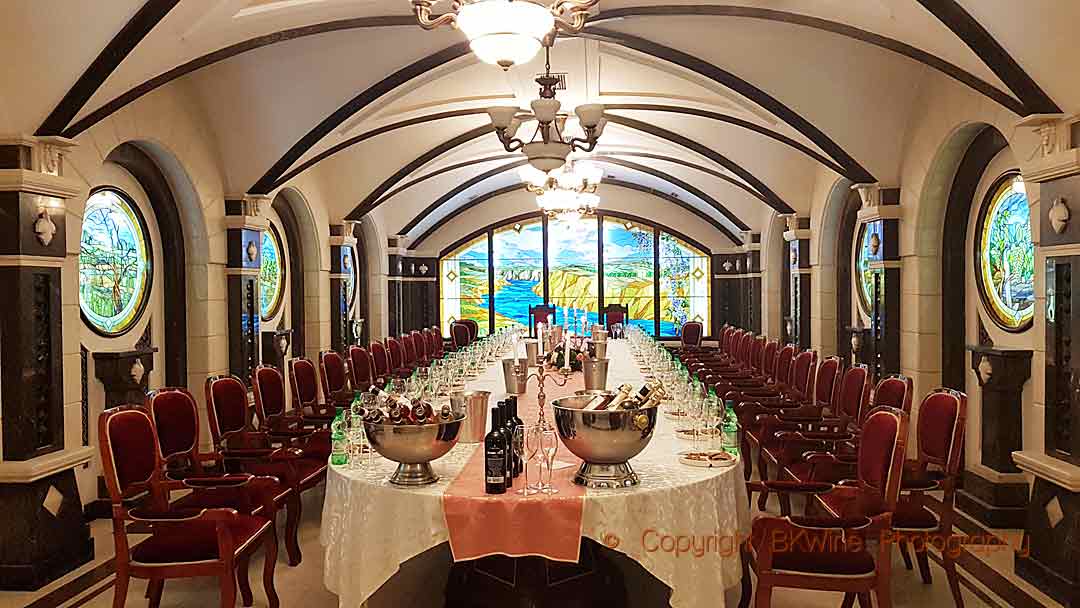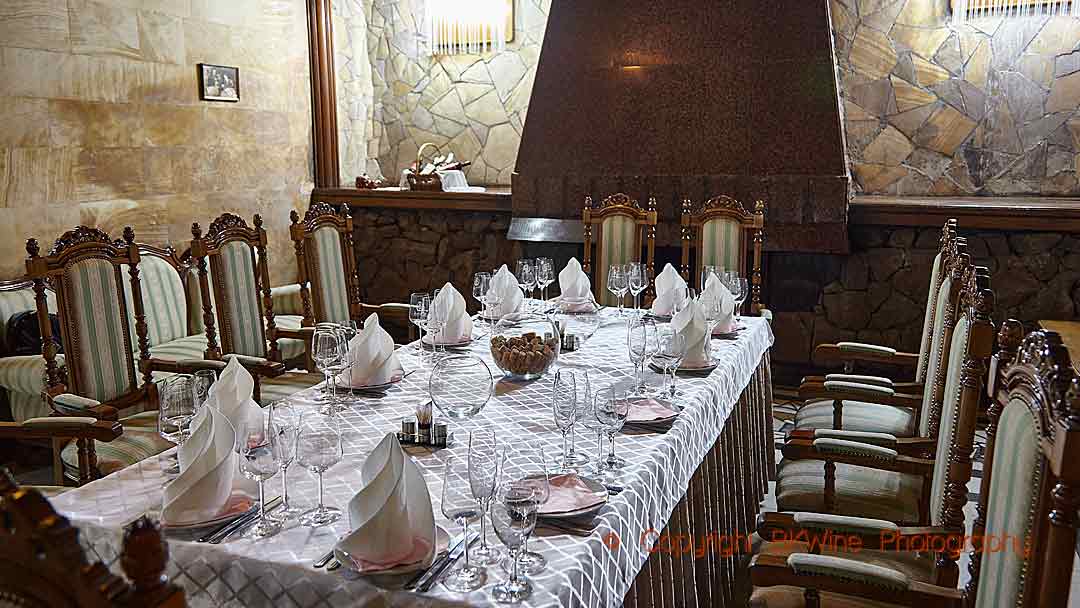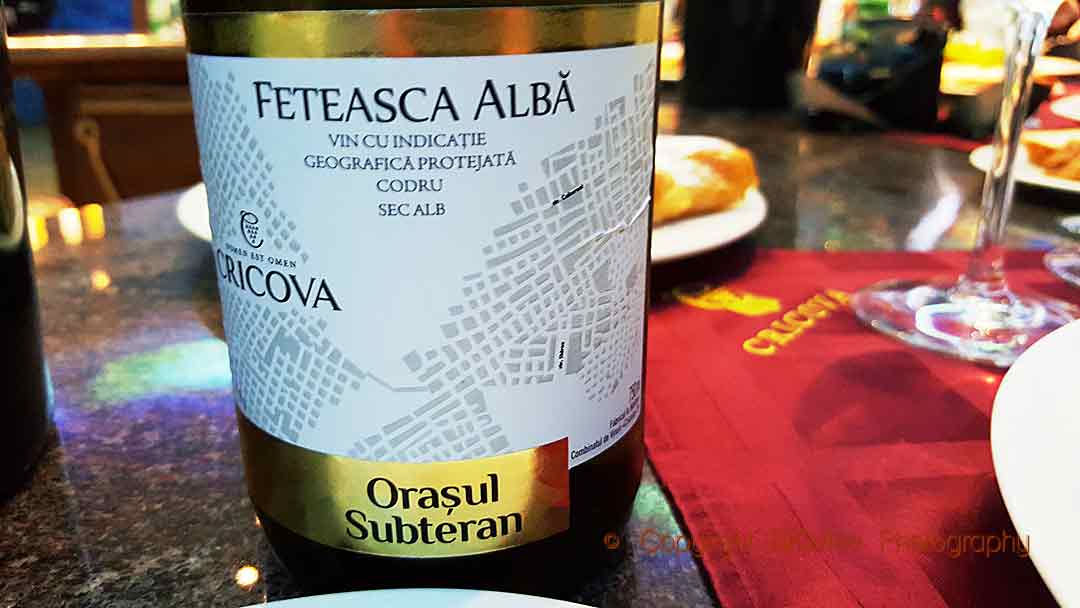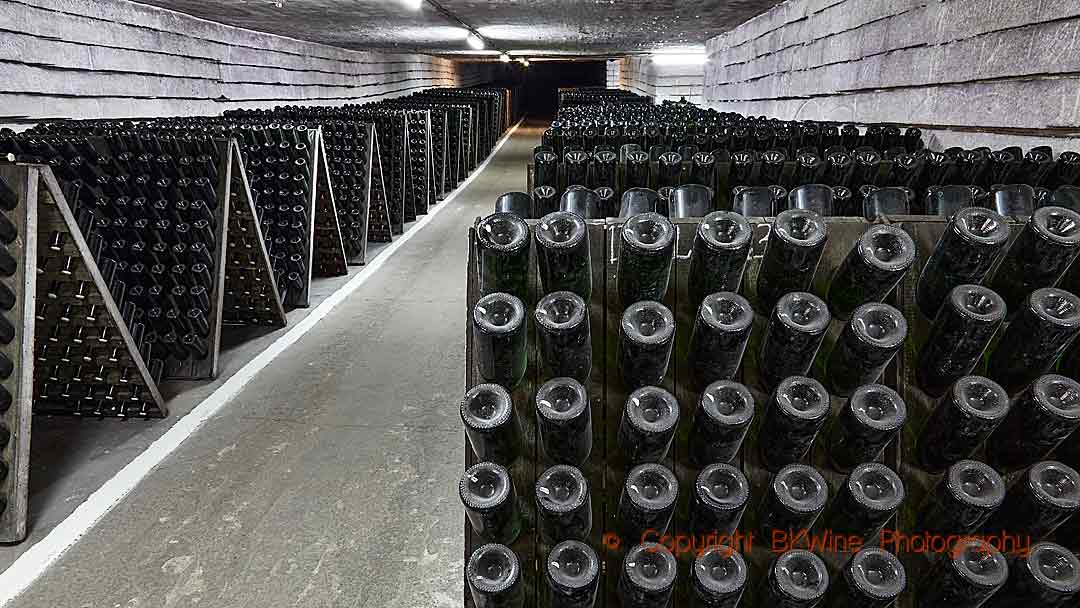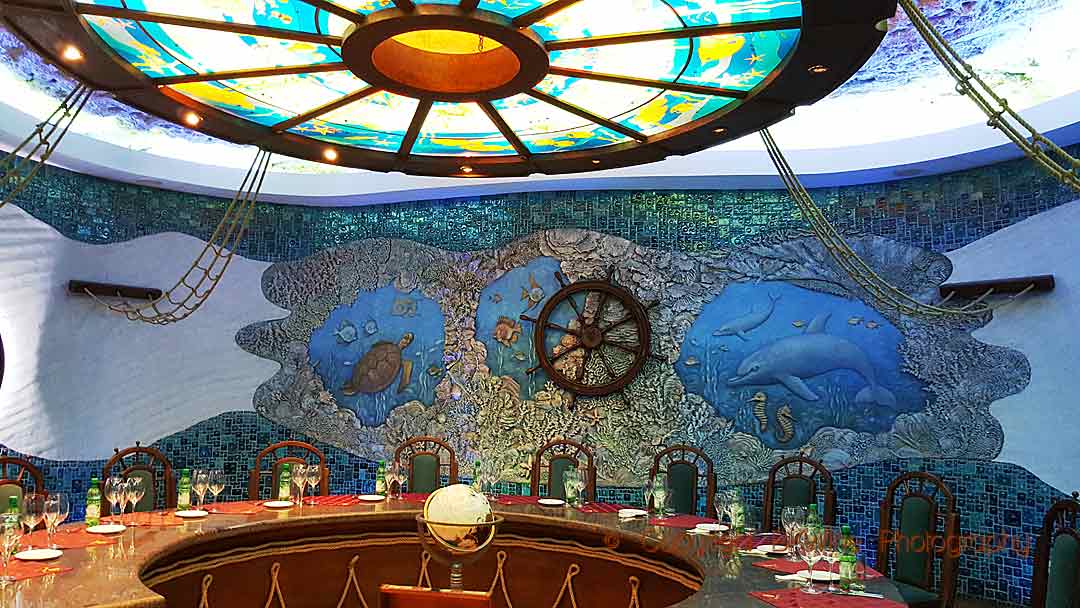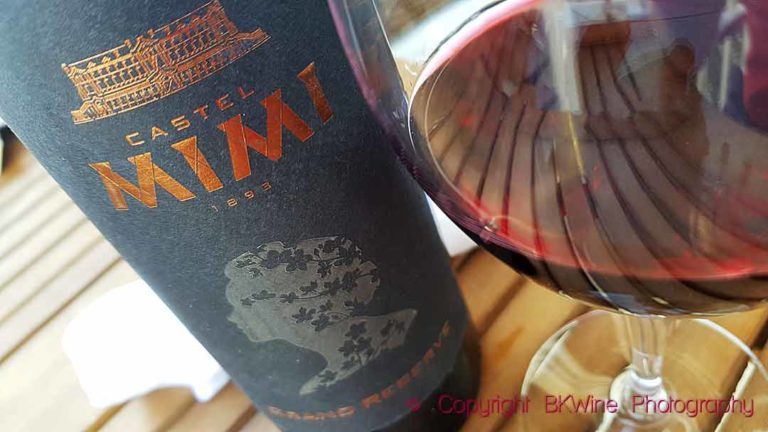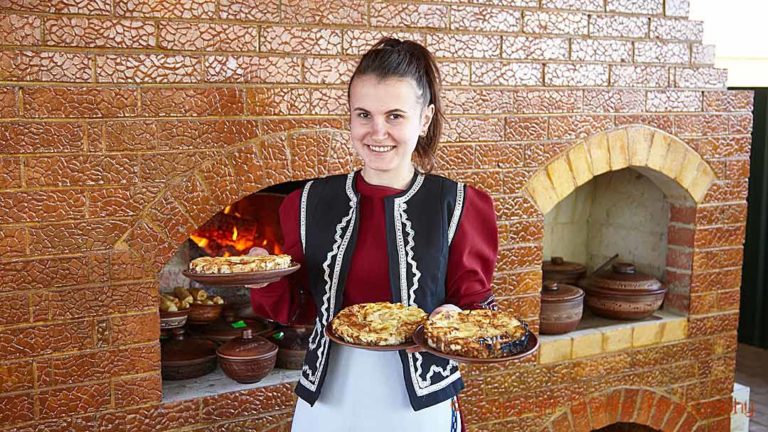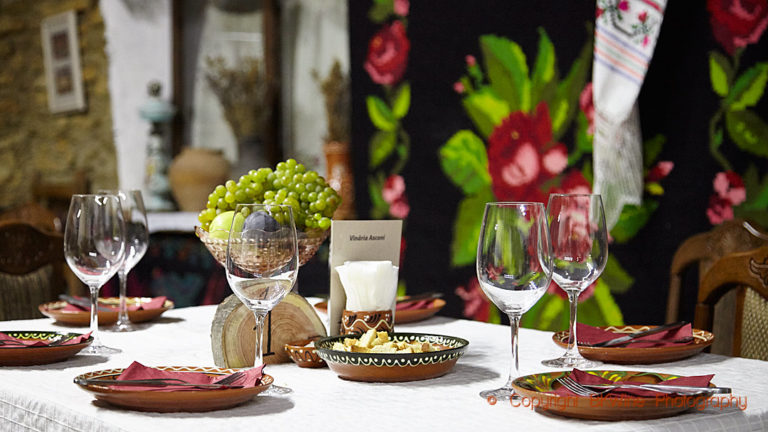Whatever reason you might have to go visit Moldova, you wouldn’t want to miss the cellars of Cricova and Milestii Mici. These cellars, often called caves actually, are amazing places, whole underground cities. They are an attraction in themselves that you don’t have to be a wine lover to appreciate. Cricova and Milestii Mici are both state-owned and the two biggest wine estates in Moldova.
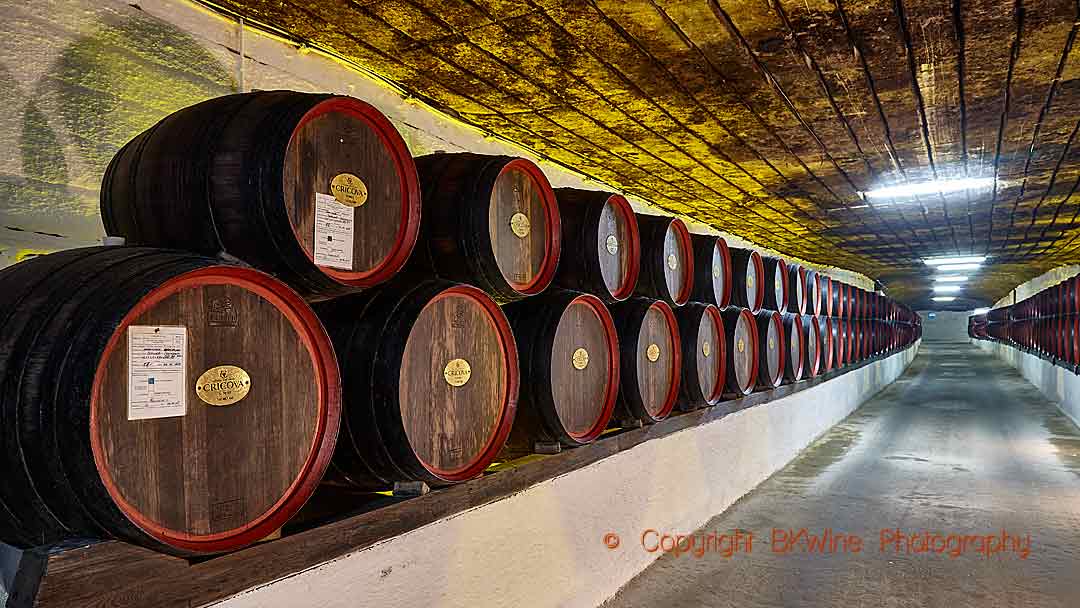
This is an article in our series on wines from Moldova:
- Moldova, an exciting “new” wine country with a long history | Britt on Forbes
- Moldovan wine classics in modern versions: Chateau Purcari and Castel Mimi
- Wine in Moldova: Château Vartely and Asconi Winery, two strong newcomers after independence
- Moldova’s emerging small, high-quality wine producers
- Historic bottles and traditional gastronomy in Moldova’s amazing underground wine world
- Wine tourism at Vinuri de Comrat in Moldova, a passionate project
More articles on Moldovan wines on BKWine Magazine here.
Cricova
Cricova underground caves are the most visited wine cellar in the country. It is impressive and huge. “We now have 75,000 visitors every year, but we are aiming at 100,000 and would not mind even more”, says Adrian Holban, tourism manager. The caves used to be a limestone quarry. Many buildings in the town of Cricova and the capital Chisinau, a reasonably short drive from the cellars, have been built with stones from here. And extraction still continues a little further away in the tunnels.
Small electric carts take visitors around the vast underground area. We hop on one as well, together with Adrian. We’re given a warming jacket to put on. A very good idea, it turns out. This is actually the only way to see the caves as they are far too big to walk around. Adrian gives us pieces of information here and there. We learn that the temperature down here is between 12 and 14 degrees C and the humidity is 90%.
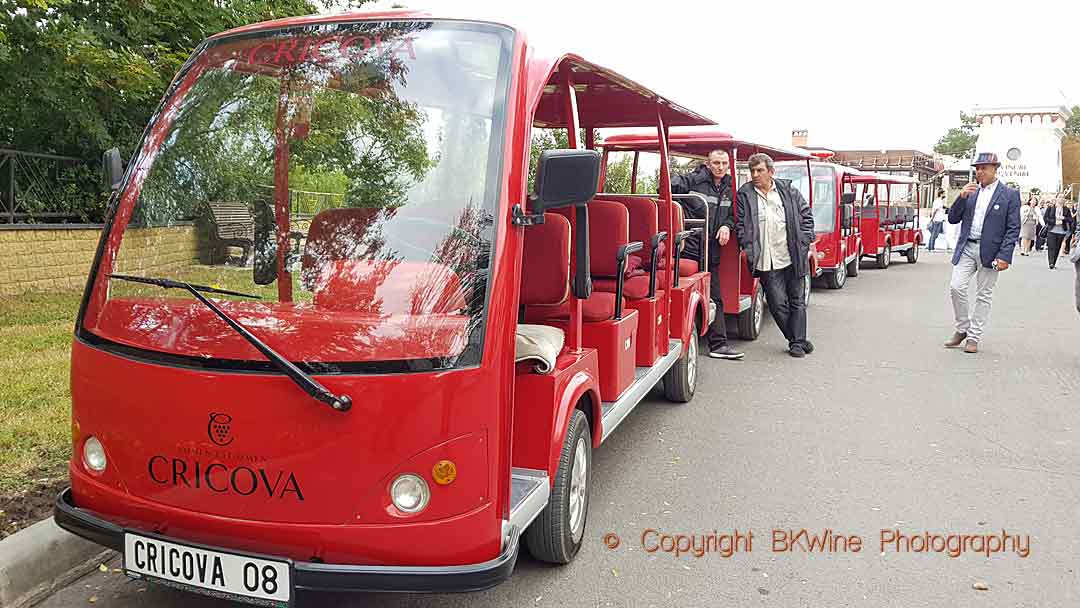
The underground streets total a length of 120 kilometres. All the streets have names of course and there are traffic lights. It is all very orderly and neat and even more so when you arrive at the five large, impressive halls where you can have tastings, meetings etc. Each hall is built in a different architectural style. Unexpected, amazing and maybe a little bit crazy.
And then there is the wine of course. “We make more than 100 different wines, white, red, rosé and sparkling”, says Adrian. “In total, we produce around 4.5 million bottles but have a capacity to produce at least the double.” China is their biggest export market and Russia is starting again, slowly.
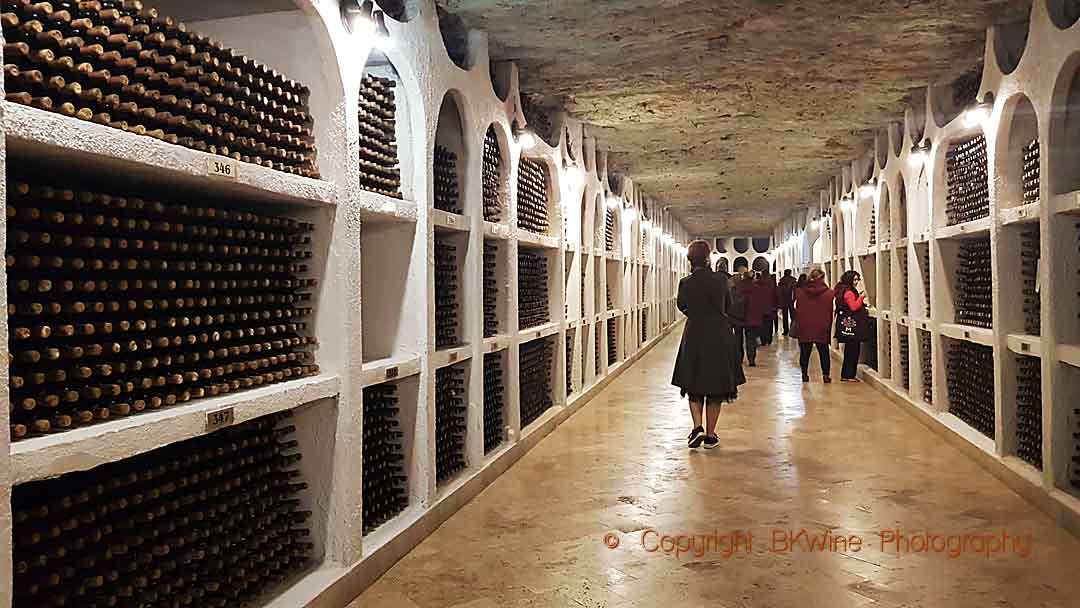
In 1980 Cricova was the first winery in Moldova to make sparkling wine with the traditional method, that is with the second fermentation in the bottle. Now, these wines are the pride of Cricova. We pass row after row with pupitres. The riddling is made by hand after a minimum of 9 months of ageing on the lees, but often 2-3 years.
We stop also to look at some of Cricova’s famous wine collections. Millions of bottles in long corridors. A collection of collections. One of the most valuable of them used to belong to Hermann Göring. Göring confiscated nearly 2000 prestigious bottles from countries occupied by Germany. After the war the collection was taken to Moscow, many bottles were drunk, and what remains of the collection is now here, at Cricova.
An amazing bit of history.
There are also two restaurants with traditional food and a wine bar.
You can visit the underground wine cellar at Cricova in electric carts. It has and almost endless network of tunnels with wine barrels and wine bottles and even underground banquet halls. Watch the video.
Milestii Mici
The wine production at Milestii Mici started in 1969. “During Soviet times”, says our guide Anna Grechikhina, “every second bottle of wine in the Soviet Union was produced in Moldova.”
So obviously a lot of space was needed. Old quarries such as Milestii Mici and Cricova came in handy. “These are ideal conditions for storing wines”, says Anna. “We have 200 kilometres of underground cellars, although only 55 kilometres are in use.”
These magnificent caves are also among the top tourist attractions for foreign visitors in Moldova.
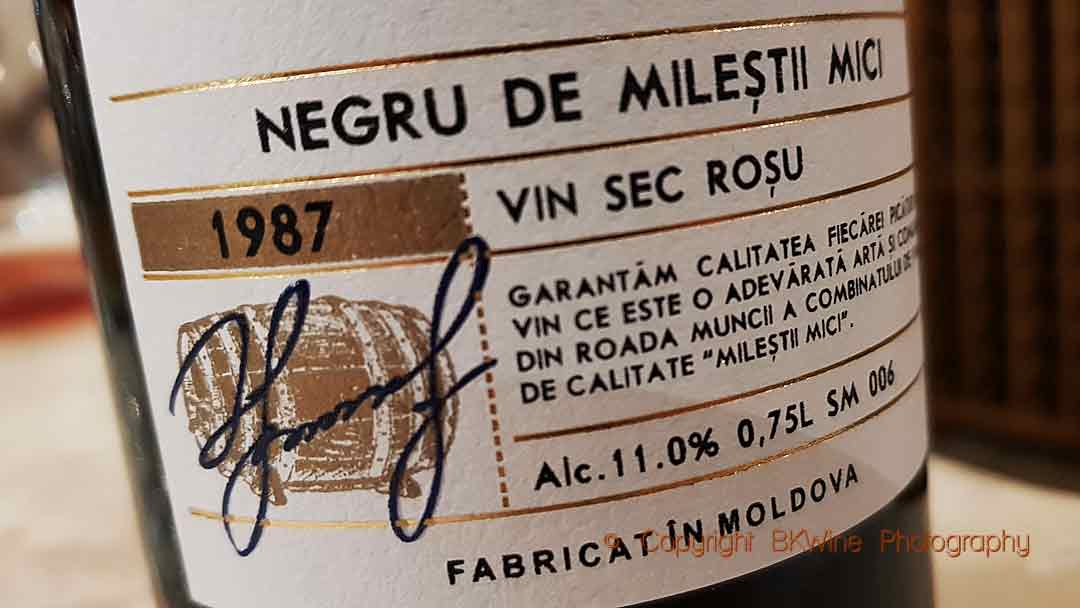
Milestii Mici produces 2 million bottles of wine. The estate owns 200 hectares of vineyards but needs to buy grapes from small farmers as well. 70 % is red vines, mostly dry nowadays. Sparkling wine is made with the Charmat method.
One of the attractions here at Milestii Mici is the fact they have the largest wine collection in the world, 1.5 million bottles, registered by the Guinness Book of World Records. An interesting part of this “Golden Collection” is the around 50 000 Soviet-made “marsala”, “madeira” and other sweet wines. Some of them are sold in the shop at very affordable prices. They are worth buying, not only because they are historical relics, pieces of history, but also because many of them are really delicious. A 1986 Marsala will cost you around 20 euro. When you drink it you cannot avoid thinking of what life was like in 1986. A world of difference.
They also have many older vintages of their “normal” red wines, a rare opportunity to taste older wines and perhaps bring a few of them home directly from the cellar.
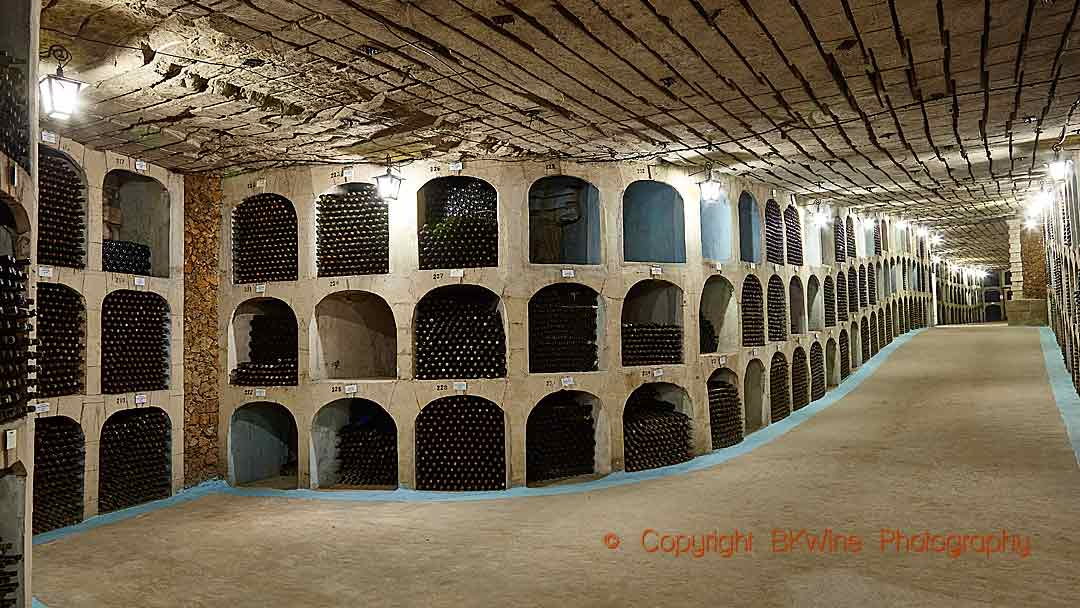
The restaurant at Milestii Mici is housed underground in a magnificent hall. Traditional dishes are served aplenty, the famous placinta of course, grilled vegetables, sarmale, sheep cheese… Often musicians entertain the guests with traditional songs. “It is important to us to showcase Moldova as a country”, says Anna, “and not only the wine, also the gastronomy and the culture.”
And all this is particularly linked together in an old wine country such as Moldova.
Both Cricova and Milestii Mici are easily reachable from the capital Chisinau. Both wineries are inevitably on any visitor’s list to do, maybe not primarily for the wine (they are overall very enjoyable but there’s still room for improvement) but certainly for being such extraordinary and unexpected and historical places.
The underground cellars at Milestii Mici extends for kilometres and kilometres and may be the world’s biggest underground collection of wine. They offer wine tastings as well as traditional dining and music entertainment. Watch the video.
